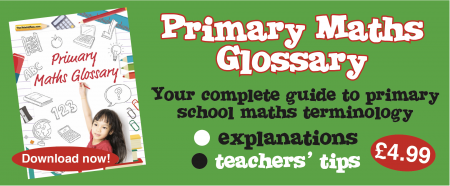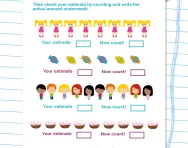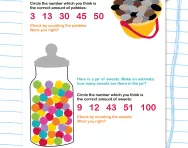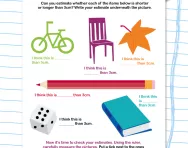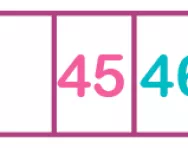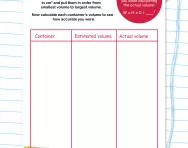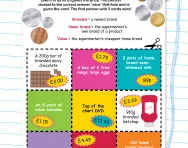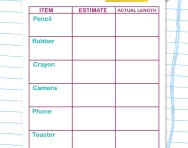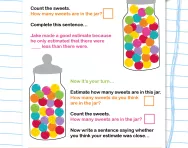Important update from TheSchoolRun
For the past 13 years, TheSchoolRun has been run by a small team of mums working from home, dedicated to providing quality educational resources to primary school parents. Unfortunately, rising supplier costs and falling revenue have made it impossible for us to continue operating, and we’ve had to make the difficult decision to close. The good news: We’ve arranged for another educational provider to take over many of our resources. These will be hosted on a new portal, where the content will be updated and expanded to support your child’s learning.
What this means for subscribers:
- Your subscription is still active, and for now, you can keep using the website as normal — just log in with your usual details to access all our articles and resources*.
- In a few months, all resources will move to the new portal. You’ll continue to have access there until your subscription ends. We’ll send you full details nearer the time.
- As a thank you for your support, we’ll also be sending you 16 primary school eBooks (worth £108.84) to download and keep.
A few changes to be aware of:
- The Learning Journey weekly email has ended, but your child’s plan will still be updated on your dashboard each Monday. Just log in to see the recommended worksheets.
- The 11+ weekly emails have now ended. We sent you all the remaining emails in the series at the end of March — please check your inbox (and spam folder) if you haven’t seen them. You can also follow the full programme here: 11+ Learning Journey.
If you have any questions, please contact us at [email protected]. Thank you for being part of our journey it’s been a privilege to support your family’s learning.
*If you need to reset your password, it will still work as usual. Please check your spam folder if the reset email doesn’t appear in your inbox.
What is an estimate?

What is an estimate?
Estimating means roughly calculating or judging a number or value.
Children begin estimating in Reception: they might be given a group of objects and asked to guess how many there are. The idea is that they use their existing knowledge to make an educated assumption (often called a 'clever guess'). They would then be asked to count the objects in order to check how close they were.
Using estimation to help with calculations
Throughout their time at primary school, children are expected to be able to make estimates in order to check whether their answers are correct.
This is often done by rounding, for example: in Key Stage 1, a child might be asked to add 12 and 13. A way to estimate the answer would be to remember that both numbers are close to 10, and 10 plus 10 is 20, so if their answer were 35, they would know that this question would need re-doing.
As children move into Key Stage 2, they will use rounding, knowledge of number facts and the inverse operation to estimate answers.
For example: a child in Year 3 might be asked to work out 318 + 298.
- Imagine they got the answer 916.
- To check if this answer is correct, it would be a good idea for them to round both the numbers to the nearest hundred and then work out 300 + 300 in their heads.
- They would see that the correct answer should be somewhere around 600 and so their original answer of 916 must be incorrect.
A child in Year 4 might be asked to work out 1490 - 818.
- Imagine they got the answer 225.
- To check if this answer is correct, they could round both numbers to the nearest 100 which would be 1500 - 800.
- They could then do this calculation in their heads to get 700.
- This answer is very far off from 200, so they would know that their first answer was wrong.
In Year 5 and 6, children would be expected to use estimation when multiplying and dividing.
- For example: if they had multiplied the numbers 29 x 51 and got 720, to check this answer, they could round the numbers to their nearest tens and then mentally work out 30 x 50.
- The answer to this is 1500, which makes it clear that the original answer was very far off.
Estimation is very useful when dividing, especially if using chunking, as chunking involves working out roughly how many times one number will go into another using existing knowledge about other, smaller numbers.
A child may be asked to work out the following: 207 ÷ 23 =
- Here it would be useful for them to remember the fact that there are four 25s in 100. Therefore 23 will also go into 100 four times.
- The big number we are dealing with is close to 200, so we know that 23 will go into 207 roughly eight times.
- If we work out 23 x 8, we get 184, which is not big enough, so we can then try 23 x 9, which gives us the answer of 207!
A child may also be asked to work out the following: 405 ÷ 9 =
- They could use their knowledge of the 9 times table: 9 x 4 = 36.
- Therefore 9 x 40 = 360.
- They could then estimate how much higher the 40 would need to go in order to get the answer, for example: they could try 9 x 42 which would give the answer 378.
- They could then try 9 x 45 which would get us our answer of 405.
